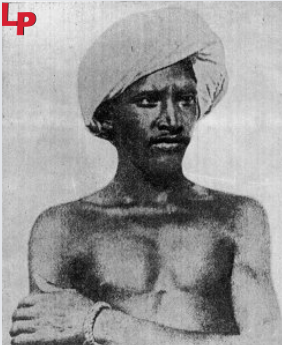Birsa Munda Biography – Who is Birsa Munda? Birsa Munda is a revered name in the history of India’s struggle for independence, particularly in the tribal regions. A folk hero and a significant figure in the Indian independence movement, Birsa Munda led a millenarian movement against the British Raj in the late 19th century. His efforts were centered in what is now Jharkhand and surrounding areas, where he galvanized the Munda tribe and other tribal communities to resist the oppressive British regime.
Find Birsa Munda age, husband, net worth, weight, height, career, family, pics biography & more. Get information about all key achievements or accomplishments of Birsa Munda.
Birsa Munda Biography
| Attribute | Details |
|---|---|
| Full Name | Birsa Munda |
| Date of Birth | November 15, 1875 |
| Age | 24 years (at the time of death) |
| Father’s Name | Sugana Munda |
| State | Jharkhand |
| Net Worth | Not Disclosed |
| Cause of Death | Cholera |
| Religion | Initially Sarna, later Christian |
| Education | Educated in Salga under Jaipal Nag, briefly attended German Mission School |
Early Life and Education
Birsa Munda was born on November 15, 1875, in the tribal belt of what is now Jharkhand, in the village of Ulihatu. He belonged to the Munda tribe, a significant community in the region. From a young age, Birsa was exposed to the harsh realities faced by his people under British colonial rule, which shaped his later activism.
He received his early education in the village of Salga, where he studied under the guidance of Jaipal Nag, a local teacher. Birsa’s thirst for knowledge led him to convert to Christianity so that he could attend the German Mission School. However, his time at the school was short-lived. Birsa soon realized that the British were using education as a tool to convert tribal people to Christianity. Disillusioned, he left the school and reverted to his tribal roots, eventually creating his own faith, Birsait.
The Birsait Movement
Birsa Munda’s creation of the Birsait faith was a turning point in his life and in the history of the Munda tribe. The movement attracted members of the Munda community, who began to see Birsa as a spiritual leader and a protector of their traditional way of life. The Birsait movement was not just a religious revival but also a socio-political movement that challenged the British colonial authority and its exploitation of tribal lands.
The primary cause of the Munda revolt, which Birsa led, was the unfair land-grabbing practices by the British and local authorities. These practices undermined the traditional land ownership systems of the tribal communities, leading to widespread displacement and suffering. Birsa Munda and his followers openly declared that the real enemies were the British authorities and not the Christian converts among the Mundas.
Struggle Against the British
Birsa Munda’s revolt against the British was a significant chapter in the broader Indian independence movement. His leadership was instrumental in organizing the Munda and Oraon tribes in their resistance against the British. The revolt primarily concentrated in the Munda belt, including regions like Khunti, Tamar, Sarwada, and Bandgaon.
Birsa’s ability to inspire and mobilize the tribal communities made him a formidable force against the colonial administration. His resistance was not just about reclaiming land; it was about preserving the cultural identity and autonomy of the tribal people. The movement posed a serious challenge to British colonial policies, and Birsa’s name became synonymous with tribal resistance.
Personal Life and Legacy
Birsa Munda’s life was tragically short but incredibly impactful. He passed away on June 9, 1900, at the young age of 24, reportedly due to cholera while in British custody. Despite his brief life, Birsa’s legacy continues to resonate, particularly among the tribal communities in India.
His portrait now hangs in the Indian Parliament Museum, a testament to his enduring influence and contribution to the country’s freedom struggle. Birsa Munda is remembered as a tribal hero who fought valiantly against the British to protect his people’s rights and way of life.
FAQs
Q1: Who was Birsa Munda?
A1: Birsa Munda was a tribal independence activist and folk hero from the Munda tribe in Jharkhand. He led a movement against British colonial rule in the late 19th century.
Q2: What was Birsa Munda’s age at the time of his death?
A2: Birsa Munda was 24 years old when he passed away.
Q3: What was the cause of Birsa Munda’s death?
A3: Birsa Munda died of cholera while in British custody.
Q4: What was Birsa Munda’s religion?
A4: Birsa Munda initially followed the Sarna faith but later converted to Christianity during his education at the German Mission School. However, he later reverted to his tribal faith.
Q5: What was the Birsait movement?
A5: The Birsait movement was a religious and socio-political movement led by Birsa Munda that challenged British colonial rule and sought to protect the rights and traditions of the Munda tribe.
Conclusion
Birsa Munda’s life and legacy are integral to the history of India’s struggle for independence. His courage, leadership, and unwavering commitment to his people’s cause continue to inspire generations. Birsa’s story is a powerful reminder of the role of tribal communities in India’s freedom struggle and their enduring fight for justice and equality
